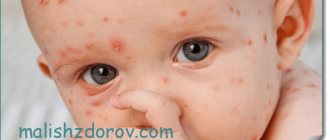Mental disorders are a pathological state of a person’s psyche that interferes with his normal functioning. People suffering from such disorders have difficulty adapting to society, often cannot cope with everyday tasks, experience difficulties at work and in family life, and are unable to achieve personal goals.
During mental disorders, processes occur in the body that are quite difficult to immediately identify
Depression
According to Depression WHO, depression is the most common mental illness, affecting more than 300 million people worldwide.
With depression, there is a persistent decrease in mood and self-esteem, loss of interest in life and previous hobbies, pessimism, sleep and appetite disorders. The speech of a depressed person has its own characteristics:
- Quiet voice.
- Lack of desire to have a conversation.
- Long thought before answering, inhibition, careful choice of words.
- Frequent use of In an Absolute State: Elevated Use of Absolutist Words Is a Marker Specific to Anxiety, Depression, and Suicidal Ideation of words with a negative connotation (“lonely,” “sad,” “miserable”), the pronoun “I,” and words expressing totality (“always”, “nothing”, “entirely”).
In addition, there is the concept of masked depression, when a person hides his problems and tries to appear happy. Recognizing the disorder in this case is not easy: the interlocutor will always deny all life’s difficulties. May make jokes about suicide.
Masked depression is more difficult to recognize. Such patients will try not to touch upon topics that are problematic for them in the dialogue, emphasizing that everything is fine in their lives. But as soon as we start talking about areas where they are experiencing difficulties, we will see despondency on their faces and hear the phrases: “What is the hurry for me? I’ll have time for everything, I have my whole life ahead of me.”
Lyutsina Lukyanova, psychotherapist, chief medical doctor
Diagnostic methods
To establish a diagnosis in psychiatry, 4 main groups of methods are used:
- Clinical. This group includes conversation with the patient, observation of the sick person, as well as interaction with his family and other close people.
- Psychometric. These methods are based on the use of testing: self-questionnaires filled out by patients themselves, and questionnaires recorded by the attending physician.
- Laboratory. It covers genetic and immunological tests to find the cause of the disease. They study the patient’s specific genes, looking for infectious agents that cause organic brain damage.
- Instrumental. This includes hardware studies: electroencephalogram, computer and magnetic resonance imaging, neurophysiological test system.
Important! Laboratory and instrumental methods are rarely used, only when the biological origin of the disease is suspected. In most cases, the first two methods are sufficient to establish a diagnosis.
Bipolar affective disorder (BD)
Bipolar affective disorder, or manic depression, is another mental illness associated with mood changes. About 60 million people in the world suffer from mental disorders. The life of such people passes in two modes: mania (or hypomania - its lighter form) and depression. The duration of each period is individual and unpredictable; it can range from several days to several months.
A characteristic feature is a change in phases: increased mood or desire to move, do something, create, commit and depression, apathy, despondency, powerlessness, indifference. The moment when the phase change occurs is impossible to predict.
Alexandra Shvets, Candidate of Medical Sciences, neurologist at the Ekaterininskaya Clinic
The manic phase is characterized by an incredible increase in mood and strength, increased activity, including sexual activity. There is so much energy that a person stops sleeping and eating, he is busy all the time. The speech of a patient in a manic phase is characterized by the following features:
- Excessive talkativeness. The person is excited, jumping from one thought to another.
- Boasting, self-confidence and the feasibility of one’s plans. The man says that he is ready to move mountains and complete many different projects.
- Delusional ideas (manifest in special cases). For example, a patient may say that everyone is jealous of him and wants to harm him.
The depressive phase is accompanied by a loss of strength, self-esteem, sexual desire, loss of interest in previous hobbies and life in general. The person is depressed, inhibited, and does not want to communicate with anyone. In severe cases, plans suicide.
Treatment of mental condition
Mental disorders are treatable in most cases. To correct them, therapeutic and symptomatic drug therapy, as well as psychotherapeutic techniques, are used.
Medication assistance
Medical somatic treatment allows you to cope with the symptoms of mental illness, reduce its manifestations and reduce discomfort for the patient. They can also be used to treat a disease if it is caused by biological factors.
Picamilon is a nootropic and is used to improve memory.
| Drug groups | Impact on mental disorders | Examples of funds |
| Nootropics | Normalize blood circulation in the brain, improve memory and intelligence. They are used for organic lesions of the brain and senile dementia. | Picamilon, Nootropil, Phenibut |
| Psychostimulants | They neutralize organic lesions of the central nervous system and help cope with developmental pathologies that cause nervous disorders. | Vyvanse, Ritalin, Dexedrine |
| Tranquilizers | Relaxes, calms, relieves anxiety, stress, panic. They are used for strong emotional manifestations of the disease, for aggressiveness. | Phenazepam, Hydroxyzine |
| Natural sedatives | Relieves stress and irritation, calms. They relieve a complex of mental symptoms: anxiety, hysteria, paranoia, aggressiveness, suicidal tendencies, panic attacks. They are used as symptomatic therapy for various types of mental disorders. | Persen, Novo-passit, Valerian extract |
| Chemical sedatives | Corvalol, Bromcamphor Afobazole | |
| Normotimics | Helps cope with mood swings characteristic of affective states. | Valpromide, Carbamazelide |
| Antipsychotic drugs | Increases concentration, relieves stress and tension. Used as symptomatic therapy. | Haloperidol, Quetiapine, Clozapine |
| Antidepressants | They stimulate the production of neurotransmitters, help overcome depressive states and other disorders accompanied by depression. | Melipramine, Trizadone, Fluoxetine |
| B vitamins | Strengthen nerves, help cope with stress, depression, psychosis, and aggressiveness. | Angiovit, Pentovit, Compligam B |
Pentovit serves as an antidepressant for disorders
Psychotherapy
Psychological methods help to cope with the cause of pathology in cases where it is of inorganic origin.
The main techniques used by doctors include:
- supportive conversations with a psychotherapist;
- depth psychological and behavioral therapy;
- art therapy: drawing, modeling, origami;
- gaming activities with role-playing.
Classes can be conducted individually, together with the patient’s family or in groups. Depending on the symptoms and the specific disease, these methods can be combined or performed separately.
Generalized anxiety disorder
Epidemiology of anxiety disorders in the 21st century affects a third of the planet's population. A person constantly experiences anxiety and anxiety, suffers from unpleasant sensations in the body: trembling, sweating, dizziness, discomfort in the solar plexus area. Anxiety is usually caused by a variety of fears related to the future.
Among the features of communication:
- Stories about your own fears. A person is afraid to either fly on a plane, or get into an elevator, or communicate, or go into unfamiliar places.
- Constant indignation and complaints, including about health conditions.
Often these are lonely people who have not achieved success in their personal lives and work. They are often outraged by something: the leadership of the country or company where they work, the situation in the state or at home - everything they encounter in life.
Lyutsina Lukyanova
Reasons for development
There are three main causes of mental disorders:
- neurophysiological. Damage to the central nervous system as a result of injuries and illnesses;
- genetic. It is caused by an acquired or hereditary feature in genes;
- psychological. It is connected with upbringing laid at an early age.
Some highlight the social reason for the development of mental disorders. However, in most cases it stems from psychological reasons. For example, a panicky fear of making even a minor decision in adulthood may be the result of excessive guardianship on the part of parents.
Obsessive-compulsive disorder (OCD)
Another disease associated with anxiety. With it, the patient has obsessive, frightening thoughts that he is unable to fight. To get rid of anxiety, a person performs some kind of ritual: spits over his left shoulder, checks all the locks in the house, washes his hands, and so on. These actions may seem pointless, but they help the patient to relieve the condition for a short time.
A person with OCD can be recognized by the same speech characteristics as those with generalized anxiety disorder. These are complaints, suspiciousness, repeated conversations about fears. However, it will be much more effective to observe his behavior and track the ritual. A typical OCD patient is the American inventor Howard Hughes, about whose life the film “The Aviator” was filmed. He constantly washed his hands because he was afraid of catching an infection.
It is very difficult to identify patients with OCD by phrases in speech, the exception is if the person himself wants to tell you about what is bothering him. It’s not difficult to notice them if you watch people in the park, for example.
Lyutsina Lukyanova
Stages of formation of mental disorder
In psychiatry, there are 5 main stages, or phases of the formation of mental disorders:
- Pre- and perinatal phases. During pregnancy and childbirth, the greatest influence on the development of pathology is exerted by genetic factors, the effects of infections and toxins, and the peculiarities of the course of childbirth. Family relationships and the environment are also important.
- Primary socialization phase. The development of disorders is influenced by infections, as well as socio-psychological factors: upbringing, relationships within the family, with peers, with other relatives. The phase lasts until school age.
- Prodromal phase. This is where the triggering factors of the disease begin to act. This may be psychological stress caused by a change in situation, difficulty in relationships with others, or personal problems. This is a borderline condition, and with intervention at this stage, the development of the disorder can be prevented.
- Debut. In this phase, the first negative symptoms of the disorder appear. Due to a stressful situation, a person’s psycho-emotional state worsens, he loses control over his behavior and actions.
- The phase after the onset of the disorder. Here the main role is played by factors that support pathological behavior. They can be biological, psychological and social.
Primary socialization is the main thing in the life of every person and begins in childhood
The first two phases are of greatest importance in the development of psychological deviations. It is in them that vulnerability to the appearance of certain mental pathologies is formed. The more successful the pre-, perinatal and primary social phases were for the child, the lower the likelihood of the disorder occurring in the future.
Post-traumatic stress disorder (PTSD)
The disorder can occur after a traumatic situation, most often associated with a threat to life. The patients are victims of sexual or other violence, terrorist attacks, or participants in military operations. They try to avoid conversations, places and situations that may remind them of the events they experienced, but memories constantly return them there. In especially severe cases, the patient may displace the event from memory, as if to forget.
Patients with PTSD suffer from both depressive and anxiety symptoms, so in their speech you can find the same signs as in patients with depression or anxiety disorder.
It is difficult to notice anything from their statements, because they try not to communicate with anyone, living in their own experiences. But if the dialogue does take place, then you will not hear a word about happiness, joy or love. The interlocutor with PTRS will either be laconic or devote his story to the misfortune that happened to him.
Lyutsina Lukyanova
Types of mental illness
There have been repeated attempts to classify mental disorders. Scientists and researchers have proposed many classifications of disorders based on different characteristics. Different groups of mental disorders also existed and still exist in different countries.
But the international classification is ICD 10; it was developed in collaboration with specialists from different countries. Although it does not meet all the requirements for the classification of mental illness. Many issues remain controversial, which no classification or clinician has yet been able to cover. A person is too multifaceted in his manifestations. But since this classification is nevertheless accepted and used, when considering the issue of mental disorders we will rely mainly on it. Following it, mental disorders are divided into 10 classes. Let's look at them briefly.
First class (F0)
These include mental disorders caused by dysfunction or damage to the brain. Or resulting from a physical illness. In fact, all disorders here are of organic origin. This also includes late-life dementia. Moreover, dementias are diagnosed depending on the causes of their occurrence, as nosological units. But all other organic disorders require a separate diagnosis to clarify the causes, either from another category or from the same one. Diagnosed only as a syndrome. For example, a paranoid state may be diagnosed due to Alzheimer's disease. Only substance abuse and alcoholism are excluded from the group.
Class two (F1)
This cluster includes mental disorders and behavioral disorders due to the abuse of psychoactive substances. This group includes only those disorders in which dependence on the use of psychoactive substances has developed. If dependence has not been formed, then such disorders are already considered in cluster F6.
Class three (F2)
This group includes schizophrenia, schizotypal and delusional disorders. All these disorders are classified as psychotic and subpsychotic. Affective disorders are not included here. Here schizophrenia and mental disorders of inorganic origin are combined. But they are similar in clinical manifestations to schizophrenia. But the signs necessary for the differential diagnosis of schizophrenia are still absent.
Acute psychotic states in this group are considered as variants of reactive psychosis. Most delusional disorders are very difficult to differentiate clinically from schizophrenia in the early stages of development. Delusional disorders are divided depending on duration into chronic, acute and transient.
Class Four (F3)
This class includes affective disorders. When a person suffers from an affective disorder, this is expressed primarily in a change in affect (emotions) or mood in two opposite directions - unmotivated elation or, conversely, depression. Moreover, changes in mood in one direction or another are accompanied by changes in activity, according to the mood. Typically, the onset of the disorder is associated with a preceding traumatic event or stress.
Diagnosis is usually made in the absence of reference to the nature of the origin of the disorder. The exception is organic affective disorders (F06.3). Here we will already talk about the indisputability of the presence of the fact of an organic disorder as the cause of the disorder. Affective disorders are either depressive (depressed mood) or manic (increased activity). The polarity of the course of affective disorders was proposed by K. Leonhard. This polarity was reflected in ICD 10.
RELATED MATERIALS: Warning: Sociopath with Antisocial Personality Disorder: Signs
Fifth class (F4)
These include neurotic disorders, stress-related conduct disorder syndromes and somatoform disorders. The term “neurosis” was first used by W. Cullen, back in 1776. After him, this concept began to be used in the practice of psychiatrists. In those days, the concept of neurotic included special mental disorders and disorders of the nervous system in general, which were not caused by any disease. Somatoform diseases include what can conventionally be called psychosomatic diseases. When there are physical symptoms and complaints, but the cause of the disease turns out to be “in the head.” Post-traumatic disorder is also in this class. It must meet three mandatory criteria:
- A person experiences a psychologically traumatic event more than once again, even after the passage of time (during dreams, constant memories).
- Emotional detachment.
- Mental activity is impaired to one degree or another. These disorders manifest themselves as anxiety or depressive symptoms.
The concept of “neurotic disorders” in this cluster is used only descriptively. It does not include the mechanisms of origin and course of the disorder.
Sixth grade (F5)
Here are pathological patterns of behavior associated with disorders not of the psyche, but of physiology. Disorders in this group are not united by common clinical manifestations or nature of origin. Their commonality lies only in physiological disorders. This connection can be very different. Physiological disorders can act as a cause of mental pathology (postpartum psychosis, in this case childbirth will act as a “trigger mechanism”), or be only the only or main manifestation (for example, with sexual dysfunction). Or they may be symptoms of a disorder, as in anorexia nervosa.
Seventh grade (F6)
This is a group of personality disorders or, as they were called before, psychopathy. The disturbances that arise from personality disorders concern several areas of the personality. They are most often noticeable from childhood and provoke the development of distress (suffering). And they certainly cause some degree of social maladjustment. Productivity naturally also decreases. But personality and behavioral disorders in this cluster are disorders of a non-psychotic nature. They are not completely corrected, but with the right approach they are leveled out and cause a minimum of inconvenience to the individual and society.
Many controversial situations arise with the heading of this class F 62.1 - chronic personality change after mental illness. Because it will be difficult to distinguish between what are latent manifestations of personality (what was characteristic of a person before the illness), and what will be the actual changes that arose precisely after the illness. Differentiation of diagnosis is extremely difficult.
Eighth grade (F7)
This group includes mental retardation. With varying severity, and it can also be supplemented by behavioral disorders. In ICD 10, mental retardation is divided into 4 groups depending on the severity:
- Easy.
- Moderate.
- Heavy.
- Deep.
In mental retardation, the nature of brain damage is diffuse. Those departments that have not yet completed their development are affected. Thus, all mental activity as a whole is disrupted. The degree of impairment in individual areas may vary. The disorder occurs either in the prenatal period, or during childbirth, or before three years of age.
Ninth grade (F8)
This group deals with child psychiatry. Since this includes mental disorders of various origins that arise in childhood and adolescence and therefore have specific features. Among them, we can distinguish specific (isolated) disorders, when disorders manifest themselves in one area, as well as general ones (Asperger's, Rett, Kanner syndrome) - in this case, developmental disturbances occur in all areas of the personality. Disorders on this spectrum represent, in a general sense, disorders of maturation—biological and social.
Class ten (F9)
This group includes diseases that occur primarily in childhood and adolescence. That is, those mental disorders that are inherent in the overwhelming majority of cases in children and adolescents, and not in adults.
Schizophrenia
According to WHO Mental disorders, 23 million people worldwide suffer from schizophrenia. This is a serious mental illness that is accompanied by disturbances in thinking, perception of reality, emotions, speech and behavior. Patients do not have a critical attitude towards their condition; in most cases they are confident that they are healthy. A typical example is mathematician and Nobel laureate in economics John Nash, about whose life the film A Beautiful Mind was made.
Schizophrenia can be recognized by the following signs:
- Suspiciousness and paranoia. A person may be sure that they are being persecuted or want to harm him.
- Grand ideas and plans.
- Crazy ideas. The patient may think that the world has long been taken over by aliens.
- Inability to conduct dialogue and formulate thoughts. They either break off somewhere in the middle of a sentence (sperrung), or consist of a jumbled collection of words (verbal okroshka).
One of the most striking manifestations of schizophrenia in speech is delusional symptoms of persecution. The patient will be sure that they are putting a spoke in his wheels and that he is being watched. He will whisper his guesses in your ear, looking around.
Lyutsina Lukyanova
Remember: it is impossible to make a diagnosis based on speech and communication style alone. However, if you think that your loved one’s behavior has changed, then be observant. If you have the described symptoms, it is better to show it to your doctor.
Symptoms of mental disorders
The symptoms of a mental disorder directly depend on the group to which it belongs. Thus, with schizophrenia and psychosis, the patient will show different signs of the disease.
The main symptoms characteristic of all mental disorders include:
- disturbances in thinking, mood or behavior;
- problems with normal human activities;
- severe psychological discomfort;
- inconsistency of emotions with current events;
- distortion of logical perception of reality;
- deviation from generally accepted norms of behavior.
For a man, aggressive behavior is one of the first symptoms and signs of a mental disorder
Such symptoms can appear individually or simultaneously. Also, the signs of the disease largely depend on gender: for example, men have more pronounced aggressive behavior, and women have more mood swings and hysteria.
Key points
- Misbehavior becomes a problem when it is frequent and unexpected, and leads to trouble at home, at school and with peers.
- Behavioral disorders are generally divided into two categories: oppositional defiant disorder and conduct disorder.
- Behavioral disorders may be associated with family problems, stress, and poor ability to manage emotions and activity levels.
- Contact your doctor if your child's behavior suddenly changes or if his behavior is more challenging than expected for his developmental stage.
Asthenic syndrome
This is a fairly common condition. The main symptom of a mental disorder is increased fatigue. A person feels a decrease in performance, internal exhaustion. People with mental disorders may behave differently. With asthenia, for example, they are characterized by impressionability, instability of mood, tearfulness, and sentimentality. Such people are very easily moved, they can quickly lose their composure over little things. Asthenia itself can act as a symptom of a mental disorder, which, in turn, accompanies conditions after severe infectious lesions, operations, and so on.
Hallucinations
They act as a persistent symptom of many mental disorders. Hallucinations can be auditory, tactile, gustatory, olfactory, visual, muscular, and so on. Often there is a combination of them. For example, a person can not only see strangers in a room, but also hear their conversation. Patients call verbal hallucinations “voices.” They may have different content. For example, it could be simply calling a person by name or entire sentences, dialogues or monologues. In some cases, the “voices” are imperative. They are called "imperative hallucinations." A person can hear orders to kill, remain silent, or harm himself. Such conditions are dangerous not only for the patient himself, but also for those around him. Visual hallucinations can be objective or elementary (in the form of sparks, for example). In some cases, the patient can see entire scenes. Olfactory hallucinations represent a sensation of an unpleasant odor (rotting, some food, decay), less often pleasant or unfamiliar.
Types of Personality Disorders
The prevalence of the disease reaches up to 23% of all mental disorders of the human population. Personality pathology has several types, which differ in the causes and symptoms of the disease, the method of intensity and classification. Different forms of the disorder require an individual approach to treatment, so the diagnosis should be treated with special care in order to avoid dangerous consequences.
Transitory
This personality disorder is a partial disorder that occurs after severe stress or moral shock. The pathology does not lead to a chronic manifestation of the disease and is not a severe mental illness. Transistor disorder can last from 1 month to 1 day. Prolonged stress is provoked by the following life situations:
- regular overstrain due to conflicts at work, nervous conditions in the family;
- tedious journey;
- going through divorce proceedings;
- forced separation from loved ones;
- being in prison;
- domestic violence.
Associative
Characterized by the rapid flow of associative processes. The patient's thoughts change so quickly to each other that he does not have time to pronounce them. Associative disorder manifests itself in the fact that the patient's thinking becomes superficial. The patient is prone to switching attention every second, so it is very difficult to grasp the meaning of his speech. The pathological picture of the disease also manifests itself in a slowdown in thinking, when it is very difficult for the patient to switch to another topic and it is impossible to highlight the main idea.
Cognitive
This is a violation in the cognitive sphere of life. Psychiatry points to such an important symptom of cognitive personality disorder as a decrease in the quality of brain performance. With the help of the central part of the nervous system, a person comprehends, interconnects and interacts with the outside world. The causes of cognitive impairment can be many pathologies, differing in the condition and mechanism of occurrence. Among them are a decrease in brain mass or organ atrophy, circulatory failure and others. Main symptoms of the disease:
- memory impairment;
- difficulty expressing thoughts;
- deterioration in concentration;
- difficulty in counting.
Destructive
Translated from Latin, the word “destructiveness” means destruction of structure. The psychological term destructive disorder indicates an individual's negative attitude towards external and internal objects. The personality blocks the release of fruitful energy due to failures in self-realization, remaining unhappy even after achieving the goal. Examples of destructive behavior of a metapsychopath:
- destruction of the natural environment (ecocide, environmental terrorism);
- damage to works of art, monuments, valuable items (vandalism);
- undermining public relations, society (terrorist attacks, military actions);
- purposeful decomposition of another person’s personality;
- destruction (murder) of another person.
- What is addiction in psychology - types, stages of formation and prevention in adolescents and adults
- Alcoholic epilepsy - symptoms, diagnosis, emergency care for a seizure, treatment in the clinic and at home
- Viral diseases - symptoms, diagnosis and treatment
Mixed
This type of personality disorder is the least studied by scientists. The patient exhibits one or another type of psychological disorder that is not persistent. For this reason, mixed personality disorder is also called mosaic psychopathy. The patient's instability of character appears due to the development of certain types of addiction: gaming, drug addiction, alcoholism. Psychopathic personalities often combine paranoid and schizoid symptoms. Patients suffer from increased suspicion and are prone to threats, scandals, and complaints.
Infantile
Unlike other types of psychopathy, infantile disorder is characterized by social immaturity. A person cannot resist stress and does not know how to relieve tension. In difficult situations, the individual does not control emotions and behaves like a child. Infantile disorders first appear in adolescence, progressing as they grow older. Even with age, the patient does not learn to control fear, aggression, and anxiety, so they are denied group work and are not accepted into military service or the police.
Histrionic
Dissocial behavior in histrionic disorder manifests itself in the search for attention and increased excessive emotionality. Patients constantly demand from those around them confirmation of the correctness of their qualities, actions, and approval. This manifests itself in louder conversation, louder laughter, and inadequate reaction in order to concentrate the attention of others on oneself at any cost. Men and women with histrionic personality disorder display inappropriately sexual clothing and eccentric passive-aggressive behavior, which is a challenge to society.
Psychoneurotic
The difference between psychoneurosis is that the patient does not lose contact with reality, being fully aware of his problem. Psychiatrists distinguish three types of psychoneurotic disorders: phobia, obsessive-compulsive disorder and conversion hysteria. Psychoneurosis can be provoked by great mental or physical stress. First-graders often face such stress. In adults, psychoneurological shocks are caused by the following life situations:
- marriage or divorce;
- job change or dismissal;
- death of a loved one;
- career failures;
- lack of money and others.
What is a personality disorder
Pathology is characterized by a person’s behavioral tendency, which differs significantly from the accepted cultural norms in society. A patient suffering from this mental illness experiences social disintegration and severe discomfort when communicating with other people. As practice shows, specific signs of a personality disorder arise in adolescence, so an accurate diagnosis can only be made at 15-16 years of age. Before this, mental disorders are associated with physiological changes in the human body.
Obsessions
These include conditions in which, against the will, some fears, thoughts, doubts appear. People with mental disorders of this type accept all these manifestations as their own. Patients cannot get rid of them, despite a rather critical attitude towards them. Doubt is the most common symptom of this type of mental disorder. So, a person can check several times whether he has turned off the light or closed the door. At the same time, moving away from home, he again feels these doubts. As for obsessive fears - phobias, these are quite common fears of heights, open space or enclosed spaces. In some cases, in order to calm down a little, relieve internal tension and anxiety, people perform certain actions - “rituals”. For example, a person who is afraid of all kinds of pollution may wash his hands several times or sit in the bathroom for hours. If something distracts him during the process, he will start the procedure again.
Disease six: when emotions run high
A mental condition characterized by emotional instability, increased excitability, high anxiety and lack of connection with reality is commonly called borderline personality disorder.
Borderline personality disorder is an emotionally unstable personality disorder. Borderline personality disorder has been described in a wide range of scientific literature. In such a state, a person cannot control his emotional-volitional sphere. At the same time, there is debate in science about whether borderline personality disorder should be considered a serious type of mental disorder or not. Some authors consider nervous exhaustion to be the root cause of borderline personality disorder.
In any case, borderline personality disorder is a state between normality and deviation. The danger of borderline personality disorder is the tendency of patients to suicidal behavior, so this disease is considered in psychiatry as quite serious.
Borderline personality disorder has the following symptoms: a tendency to unstable relationships with idealization and subsequent devaluation, impulsiveness accompanied by a feeling of emptiness, the manifestation of strong anger and other affects, and suicidal behavior. Treatment methods for borderline personality disorder are varied, they include both psychotherapeutic (art therapy, play therapy, psychodrama, symbol-drama, psychodrama, sand therapy) and medicinal methods (in the treatment of depressive conditions).
Risk factors
A psychological disorder, the signs of which have not yet appeared, can be initiated by one of the decisive factors:
- age. Throughout life, a person experiences at least five critical periods - early childhood (2-4 years), the beginning of school (6-8 years), puberty (12-14 years), rethinking one’s own significance, which occurs 40-45 years and senile dementia. During these periods, a person is most sensitive to influences from family and society as a whole;
- character and appearance features;
- floor. For example, clinical depression mainly affects women;
- social situation (war, change of a long-existing political regime).
When to seek help from a child psychologist?
Talk to a social worker at your child or young person's school about their behavior if:
- you notice sudden or unexpected changes in behavior (increased irritability or aggression for no reason);
- your child's behavior is more impulsive than expected, depending on his stage of development;
- Your child's behavior continually interferes with their ability to succeed in school or maintain positive relationships at home and in the community.
Contact your doctor if you would like to request a referral to a mental health professional, such as an educational psychologist.
Behavioral disorders co-occurring with other conditions
Other conditions that often occur alongside behavioral disorders include:
- attention deficit hyperactivity disorder (ADHD);
- anxiety;
- depression;
- affective insanity;
- substance use disorders.
How dangerous are mental illnesses?
Any mental illness harms a person no less than the illness of his body. In addition, medical science has long known that there is a direct connection between mental and physical illnesses. As a rule, it is mental experiences that give rise to the most severe forms of physical diseases, such as diabetes, cancer, tuberculosis, etc. Therefore, peace of mind and harmony with the people around you and with yourself can cost a person additional decades of his life.
Therefore, mental illnesses are dangerous not so much for their manifestations (although they can be severe), but for their consequences. It is simply necessary to treat such diseases. Without treatment, you will never achieve peace and joy, despite external comfort and well-being. Actually, these diseases belong to the field of medicine and psychology. These two directions are designed to save humanity from such serious illnesses.











